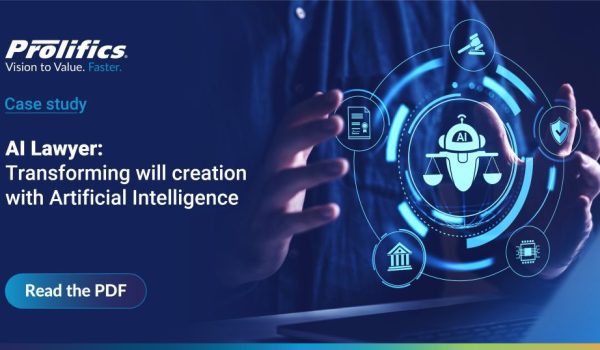Have you ever likened your business’s IT team to a finely tuned race car? We have, but I’m guessing overall, the answer is a resounding ‘no,’ so bear with me. Your IT infrastructure and team are akin to that of a high-octane, sophisticatedly engineered machine—ideally, a McLaren, as I’m indeed a papaya fan.
But why a motor racing team, you may ask? Because it’s actually strikingly similar. You have a team of Race Engineers, akin to your Site Reliability Engineers (SRE), ensuring everything runs smoothly. You have a pit stop crew, comparable to an Agile Development team for making fast changes. A Race Principal can be likened to a CTO or Head of IT, who keeps the operation on track, and finally, the race car—on this occasion, not driven by the likes of Prost, Senna, or Hamilton; instead, it’s piloted by your business applications, with everyone on the team working collaboratively on it.
Like all motorsport teams, the goal is to take first place. From a business point of view, this is replaced by goals and targets of customer satisfaction, profitability, and ROI. So, why have I spent the introduction to this article drawing comparisons? Because it comes to the crux of the issue, which is—if your business application isn’t performing, you will fall behind the pack and won’t secure a coveted podium place.
This begs the question: How do we fix underperforming apps if we don’t know they’re underperforming? The answer is: Monitoring… or it was, but there’s something far more modern and powerful—Observability.
What is Observability?
Observability marks the next stage in the evolution of application performance monitoring (APM). While APM provides insights into your applications’ activities, observability goes beyond by not only showing you what’s happening in and around the application but also the environment, highlighting key causes for concern and insight for prompt decision-making. Through AI-driven context, information from applications and the environment is gathered and organised, allowing you to understand the data effectively. Application monitoring is automated, so that you can take intelligent action, optimise application performance and accelerate application development and integration.
This modern approach to applications is reminiscent of the modernisation in motorsports, where incredibly sophisticated sensors are implemented across the entire car to monitor and track performance, the status of components and even tire temperature, so the team can adjust and make changes rapidly; in turn providing an unmatched level of granularity into their race car and its performance.
Benefits of Observability over APM:
The big difference between APM and observability is lowering the Time to Resolution (TTR) by being able to view the entire IT architecture holistically. Observability doesn’t just track your application’s performance; it evaluates it and provides real-time information of your environment, so your team can adapt and change when necessary. Think of it as narrowing the scope of where the ‘needle’ is lost in the haystack.
This holistic view is vital in motorsports as the performance of the vehicle is paramount – for example if your driver is losing time on a lap and falling behind competitors, this indicates an issue somewhere. The car’s sensors provide a real-time insight and relay this data back to the ‘pit wall’ to give the team the intel required to remediate and fix the problem during a pit stop.
Why Observability is Essential to Modern IT?
Enterprise IT is forever evolving with new architecture, deployment methods and technologies emerging at a rapid pace, driving innovation and reshaping the digital landscape. With this evolution comes more data and more points of failure where observability can intelligently adapt and scale as a vital tool for IT teams across departments. Here’s how observability is helping:
Providing Real-Time Problem Identification:
Downtime can be more costly than ever, whether you’re on track or in a business environment. To exacerbate downtime, tracking the issue takes a significant portion of time, which time-poor IT teams often do not have. Worse so, with a small team you may not have the bandwidth to run troubleshooting and diagnostics while managing day to day activities. Observability software like IBM Instana revolutionises this process by providing an instant insight into your system’s performance, with an astonishing 3-second detection of anomalies or failure, anywhere in the system. So, instead of manually looking for issues under the bonnet and spending time testing each system, the problem is flagged instantly- giving engineers crucial time to make repairs.
Operational Efficiency with Observability:
Traditional monitoring provides only a sliver of your application environment, this obfuscates issues that reside or relate to your application. With smaller IT teams that concentrate solely on bringing value to the business via new innovation, operational efficiencies must be maintained. Observability, on the other hand, offers a comprehensive view of your entire application environment, allowing for a deeper understanding of its performance and potential issues. By providing this holistic perspective, observability facilitates operational efficiency by rapidly identifying, diagnosing, and resolving issues before they escalate. This proactive approach streamlines the overall performance of the IT infrastructure, ensuring that even nuanced problems are surfaced and addressed promptly. The broader visibility offered by observability enhances the proactive management of the application environment, optimising the IT team’s utilisation and efficiency. Simply put, if your car isn’t performing – the team can find the right slot in the race to pit, change tires and put you back into the race.
Data-Driven Decision Making:
Data is the steering wheel that navigates organisations toward success. By analysing logs, metrics, and traces, observability helps IT teams gain a comprehensive understanding of their system’s performance. This wealth of information empowers them to make informed decisions, ensuring that every move aligns strategically with overarching business goals. Just as a race car relies on precise steering for optimal performance, businesses equipped with observability data steer confidently through the complex landscape of IT, accelerating toward their objectives and to the podium.
Adaptability to Complex Environments:
Just as a racing team needs to adapt to changing weather conditions or unexpected track challenges, IT systems must navigate complex environments. Traditional monitoring tools may struggle with these complexities. However, observability, excels in adapting to intricate environments such as cloud-native deployments, microservices, and hybrid architectures. Its comprehensive view enables IT teams to swiftly adjust and optimise for peak performance, ensuring they have the correct setup that manoeuvres through any complexity with ease.
Competitive Advantage:
In the race for supremacy in today’s business landscape, observability emerges as the secret weapon that not only empowers the IT team but also propels the entire organisation to pole position. Much like a championship-winning car engineered to the highest specifications, organisations leveraging observability showcase their commitment to excellence, instilling confidence in both their audience and competitors. By swiftly resolving issues, optimising system performance, and prioritising user satisfaction, these brands craft a positive and compelling brand image that resonates with customers. This strategic focus on delivering the best possible experience signals a customer-centric approach, providing a distinct competitive advantage in the market.
IBM Instana – Not all observability tools are made equal
Leading the race for observability is IBM’s Instana. Offering powerful tooling, contextual information to understand all inter-dependencies, automated discovery and configuration to enable 1 second granularity metrics; Instana offers a highly sophisticated platform which is easy to use and quickly implemented to:
- Reduce Risk – with quicker resolution of Incidents – Mean time to Detect (MTTD) can be reduced by 69% and Mean Time to Repair (MTTR) reduced by 52%.
- Increase Operational Efficiency – Time and effort can be reduced by 86%, leaving 20% more time for development. In addition, the all-in-one approach to gathering data and insights enables DevOps, Security, and IT Ops teams to work more effectively together.
- Make Cost Improvements – Reduce cloud spend – make improvements to cloud efficiency by 75% and reduce cloud spend by 50%.
- Increase Deployment Frequency – increase deployment of applications threefold, get the latest updates out to your business quicker.
Take Your Place on the Grid – Every Second Counts!
Overall, businesses looking to compete in a technology-led world need to be cognizant of customer experience; your application is a representation of your organisation and the less operational it is, the further your brand will fall behind the pack. Like a race-winning team, you need a strong strategy, a competent pit-crew, actionable data to make decisions and a performant car to propel you forward and get you your place on the podium; using observability gives you these tools to overtake the competition and provide a worthy app that satisfies clients, partners, and business-users alike.
Download our new whitepaper, Every Second Counts for a dive into the world of observability including how Instana is overtaking traditional monitoring, real-life examples and results of observability in action and actionable steps on how IT teams can start leveraging Instana.
To explore how observability can work for you, including how much business value you could recognise, use our calculator or visit our Instana page here to learn more.
 By Vikesh Kaushal
By Vikesh Kaushal
UK Marketing Leader, Prolifics








